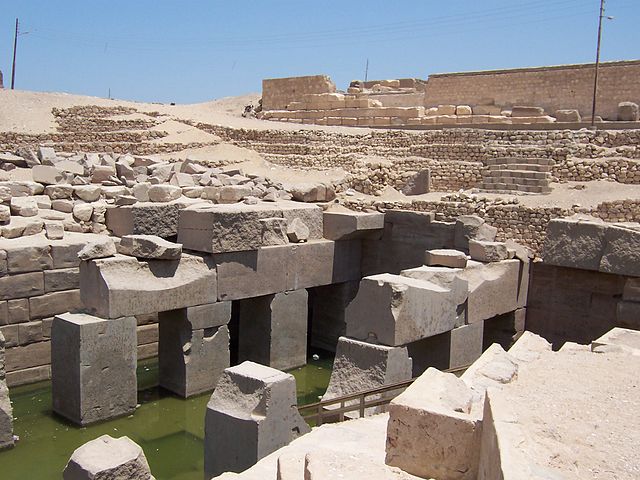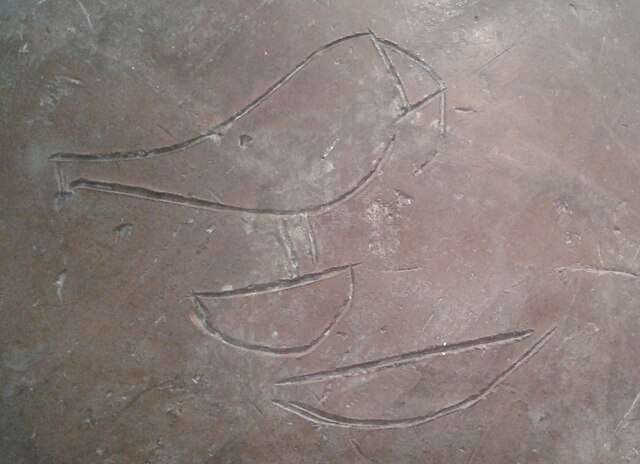Thinis was the capital city of pre-unification Upper Egypt. Thinis remains undiscovered but is well attested by ancient writers, including the classical historian Manetho, who cites it as the centre of the Thinite Confederacy, a tribal confederation whose leader, Menes, united Egypt and was its first pharaoh. Thinis began a steep decline in importance when the capital was relocated to Memphis, which was thought to be the first true and stable capital after the unification of Egypt by Menes. Thinis's location on the border of the competing Heracleopolitan and Theban dynasties of the First Intermediate Period and its proximity to certain oases of possible military importance ensured Thinis some continued significance in the Old and New Kingdoms. This was a brief respite and Thinis eventually lost its position as a regional administrative centre by the Roman period.
Nearby Abydos (Osireion pictured), after ceding its political rank to Thinis, remained an important religious centre.
Mentuhotep II, pharaoh of the Theban Dynasty XI, finally brought Thinis under Theban sway during his campaign of reunification.
A tableau from the Book of the Dead (green-skinned Osiris is seated to the right). In ancient Egyptian religious cosmology, Thinis features as a mythical place in heaven.
Upper Egypt is the southern portion of Egypt and is composed of the Nile River valley south of the delta and the 30th parallel N. It thus consists of the entire Nile River valley from Cairo south to Lake Nasser.
Image: Iry Hor name
Image: Ka vessel
Image: Kingscorpion






